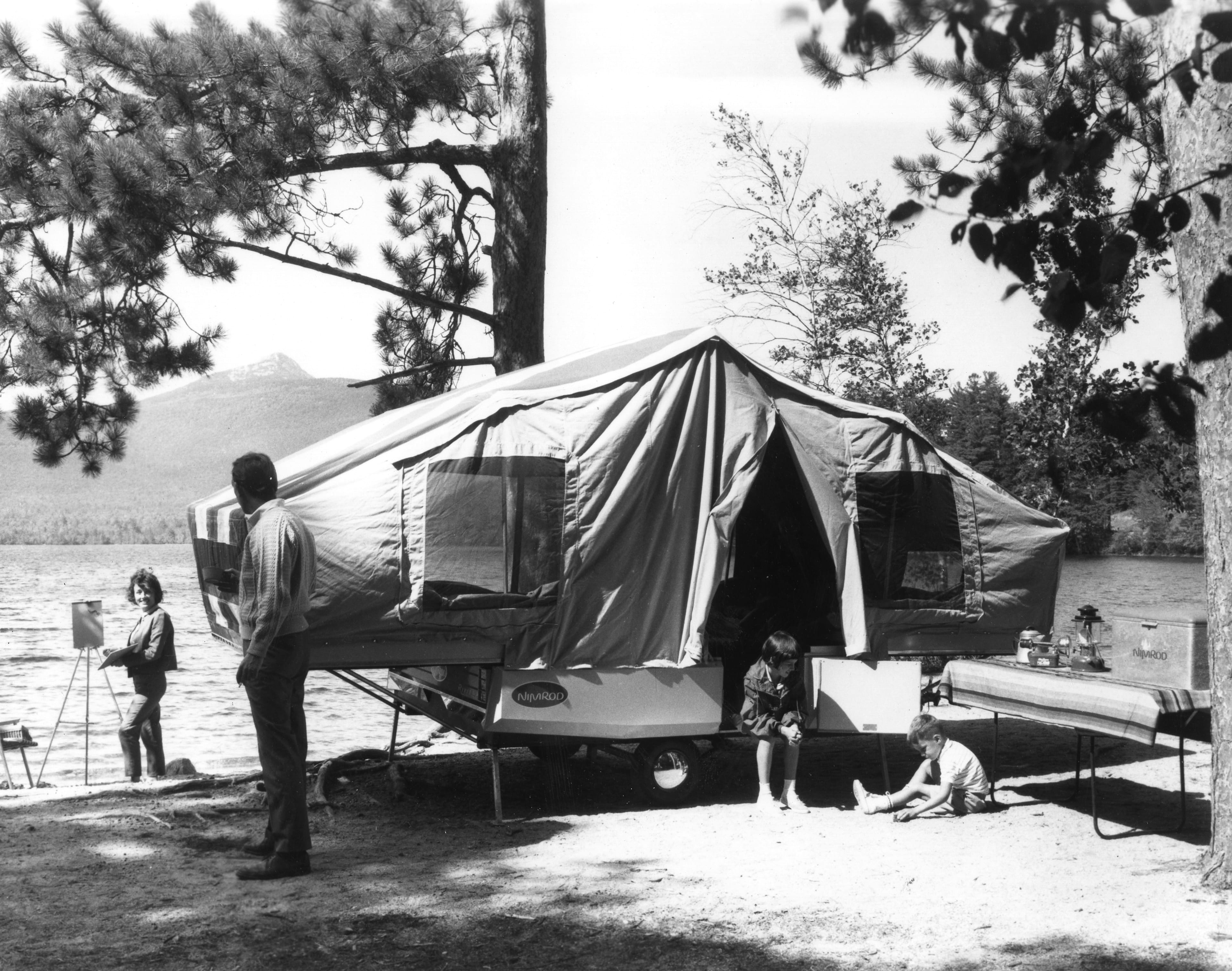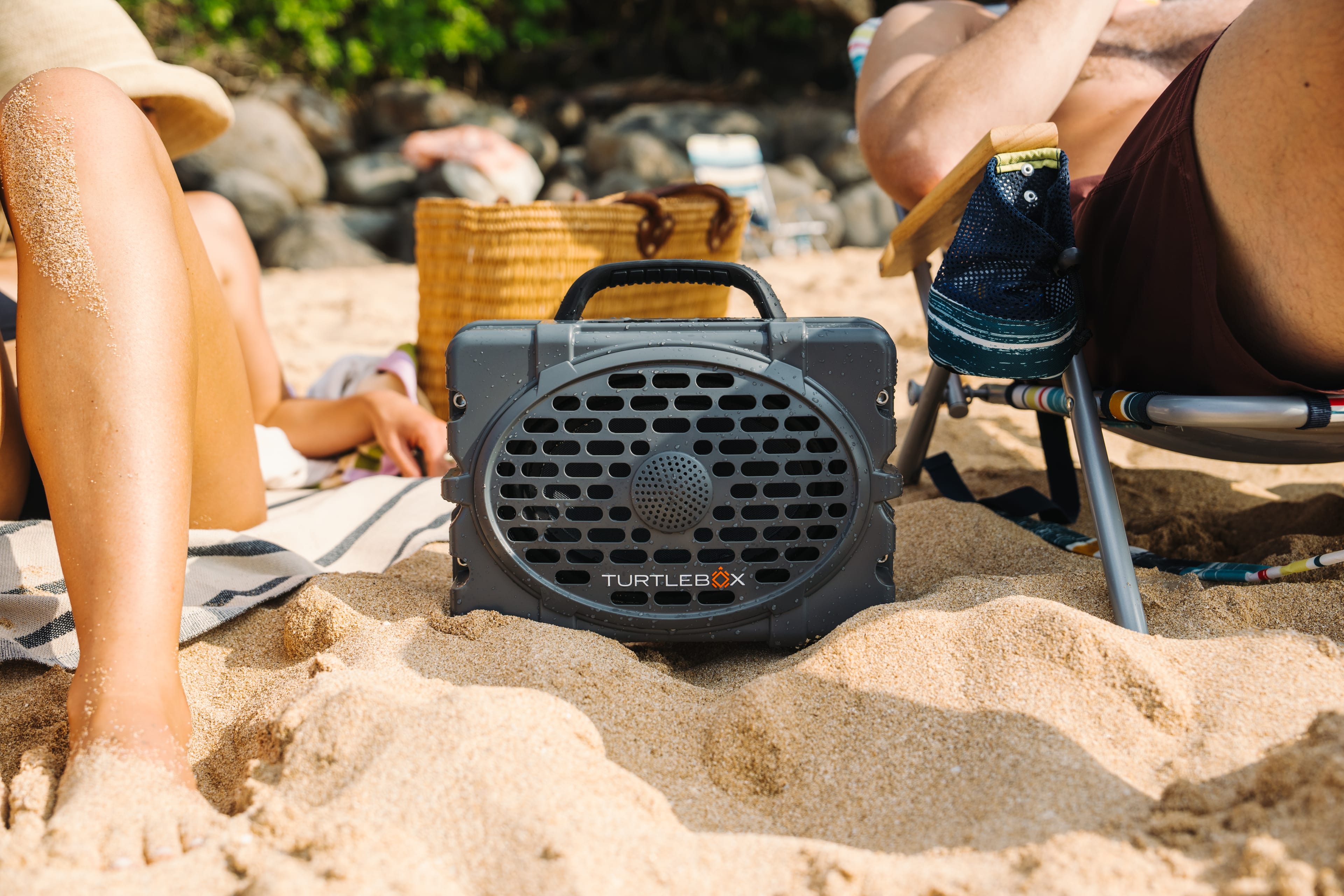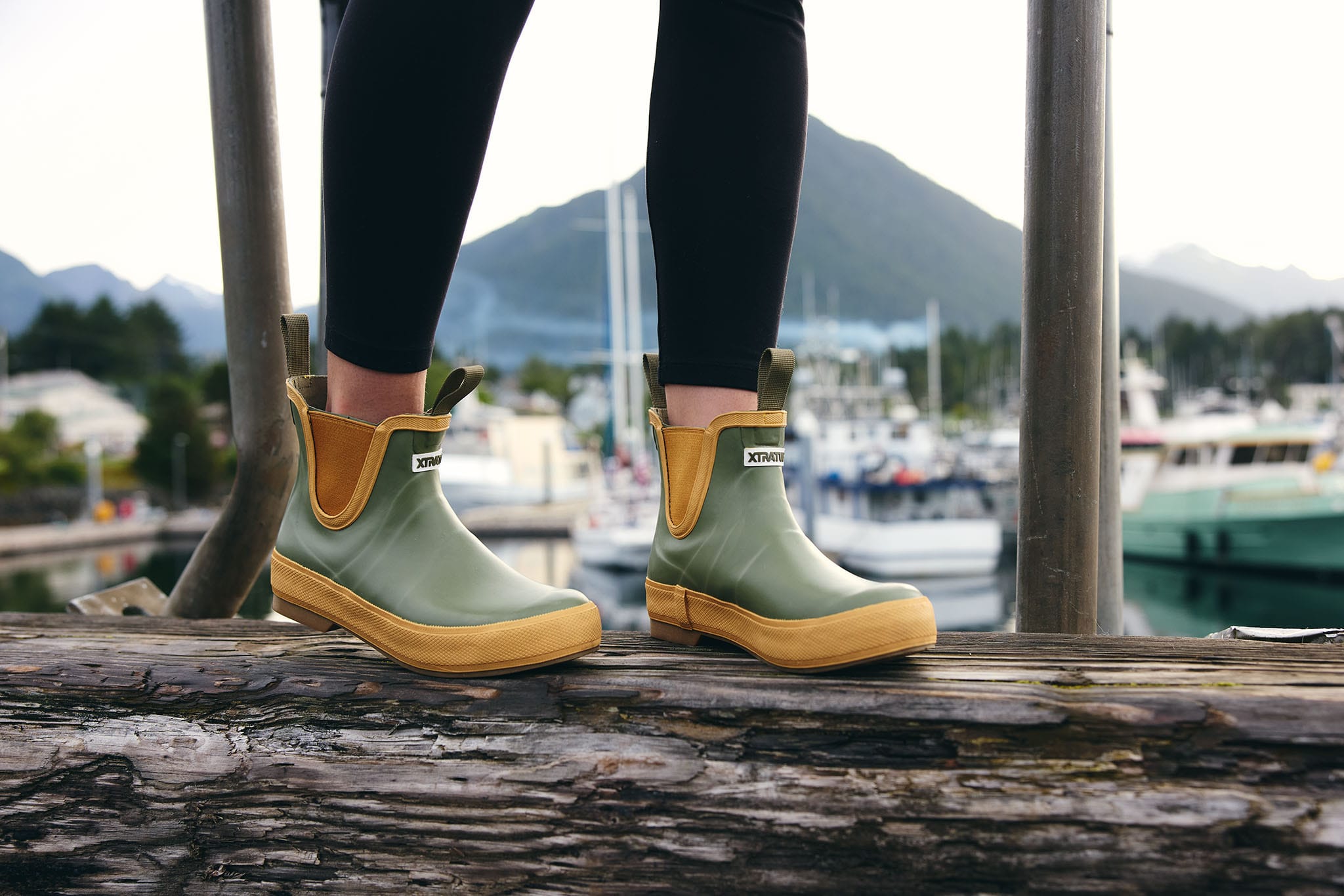Who Would've Thought a Nimrod Trailer Could be so Smart?

A Nimrod Riviera model Pop-up Camper, early to mid 1960s. | Cincinatti Museum Center/Getty Images
An all-but-forgotten brand sowed the seeds of the modern pop-up.
Ashely Ward Jr. grew up haunting his dad’s machine shop, and the nut didn’t fall far from the die. He was 23 and fresh off an Air Force stint when he filed his first patent, for a windproof pipe-lighter he called the Nimrod. Presumably, this was because he pitched the lighter to sportsmen—and “nimrod,” back in the day, was a Bible-derived nickname for a hunter.
It seemed like a good enough brand name, anyway, that Ward stuck with it when he branched out into tent trailers in 1957. Recreational camping was taking off, and Nimrod Equipment Company was part of a small boom of manufacturers launched to meet the demand. Design-wise, turn-of-the-’60s proto-pop-ups were all over the map: Tent trailers unfolded in precarious geometries of tepee tops, awnings and on-the-ground vestibules. Beds, if they slid or folded out, typically did so from a trailer’s sides.
Then, in 1963, came the Nimrod Riviera: sturdy, self-contained and—thanks to beds that extended from its front and rear—roomy. Three years later, the Riviera debuted a hard- top that “popped up” on patented, spring-loaded legs. Other manufacturers were similarly innovating—a small Michigan shop had actually first pioneered front-and-back beds— but Nimrods caught on, and the company’s national distribution helped popularize what’s now the classic design of a pop-up camper.
By 1964, says pop-up historian Joel Silvey, Ward’s company was the country’s largest manufacturer of camping trailers. Its reign, alas, was short: Nimrod changed hands in ’68, shuttered in the ’70s, then faded into obscurity. But for a time, Nimrods were ubiquitous enough that U.S. Forest Service surveys used the phrase “Nimrod-type trailer” as shorthand for all pop-ups.
“Ashley Ward was just a genius of a machinist,” Silvey says. “Nimrod could come in and machine any new ideas: easy flip-tops, easy openings. They improved everything down to the bolts and nuts.”
“They were compact and unique and simple,” says Jim Lockard, who runs a Face- book group of some 450 vintage-Nimrod owners and nostalgists. “You didn’t have to be an engineer to use them, and you could tow them with your Mazda. It was just a simple camping life.”




